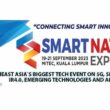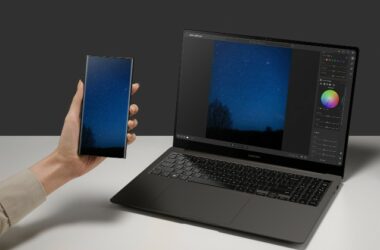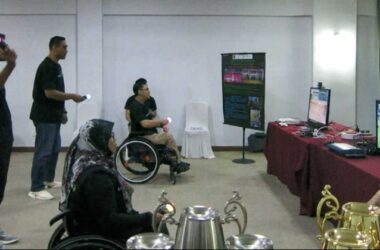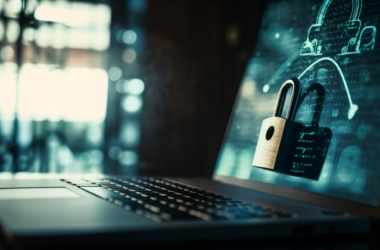By Jason Low, CEO of Virtualtech Frontier (VTF)
It’s something we’ve heard a million times before, but that doesn’t make it any less true; screens dominate our lives and our attention spans have been dwindling in response — a point emphasised by a recent article in TIME magazine.
Nowhere are the issues of attention spans and screen time more fervent than amongst our children and youth. Children tuning out on education is at an all-time high especially when everything else around them evolves at a breakneck pace whilst our approach to education remains firmly rooted in the early 2000s.
Thus the question of how to make education engaging, and effective looms large. While digital transformation in education is underway, merely digitising traditional methods falls short of an actual solution. That solution however, might be found in a realm that transcends digitisation — the metaverse. This unexplored terrain offers a unique approach to education, one that marries immersive experiences with experiential learning, promising to reshape how we educate the generations to come.
Imagine a realm where avatars, physical representations of yourself in the virtual metaverse, are the gateway to knowledge. Your avatar, your personal online presence, becomes the bridge, allowing students and educators to interact seamlessly. A dynamic environment that adapts to lesson content enriches engagement and comprehension, surpassing the confines of traditional education. With the metaverse, the newest iteration of the internet, we may have just that. A 3-D-enabled digital space that uses virtual reality, augmented reality, and other advanced internet and semiconductor technology to create lifelike personal and business experiences online, the metaverse is breaking down barriers between physical classrooms and virtual learning spaces.
In the metaverse, learning borrows a page from gaming, a strategy that resonates strongly with today’s digital natives. The likes of Roblox and Minecraft are popular examples which effectively illustrate the concept of gamification of learning. By incorporating gaming elements, the metaverse transforms learning into a game-like experience, eliminating social barriers and nurturing active participation. A familiar environment breeds comfort, making education accessible and enjoyable.
Case Study: Phoenix Asia Academy of Technology’s Metaverse Classroom
A groundbreaking example of metaverse integration is the inaugural metaverse classroom at Phoenix Asia Academy of Technology. Breaking free from traditional constraints as the first-ever metaverse classroom in Malaysia, this immersive space redefines education, with efficiency replacing time-bound limitations, while students enjoy an immersive and dynamic learning environment. The metaverse empowers students to voice their opinions without fear, creating a safe space for exploration and active engagement.
But the hitherto untapped potential of the metaverse means that there is more to explore;
- Diversity, Equity, and Inclusion Amplified: Customisation within the metaverse empowers educators to tailor lessons to individual experiences, fostering a diverse and inclusive learning environment.
- Empowering Modern Learners: The metaverse’s digital familiarity bridges the gap between educators and digital natives, enhancing the educational experience.
- Immersion through Mirror Worlds: Integrating mirror worlds elevates experiential learning, enabling students to immerse themselves in real-world contexts, fostering understanding and application to real-life situations.
A real-time example of this was witnessed at Taylor’s University’s event, THE SHOW, an exhibition of clothing designs by the university’s Bachelor of Fashion Design Technology students held entirely in the metaverse. This groundbreaking initiative, in collaboration with Mitoworld, ushered students into a realm of participatory learning, redefining how knowledge is acquired and applied. Using Mitoworld as the content creation tool, students of the Bachelor of Interactive Spatial Design course designed a virtual space for their classmates in the Fashion Design Technology course to display old and new designs, and livestream their ongoing work. Beyond giving them a chance to highlight their talents in all their glory, the students also added a special twist to the day — a unique catwalk feature enabling students have (virtual) models strut their stuff on the metaverse.
Through the seamless integration of the metaverse, students embarked on an immersive journey where they actively crafted their educational experience. By leveraging the metaverse’s capabilities, THE SHOW transcended conventional boundaries, fostering engagement and innovation in unprecedented ways. This success story underscores the metaverse’s potential to catalyse dynamic learning environments, enabling students to forge their own paths of discovery and learning.
The metaverse’s uncharted potential beckons, promising a brighter horizon for education. Its integration fosters a generation of learners who are not only proficient in digital literacy but also adaptable to an ever-changing landscape. Educators, too, can rise above traditional pedagogies, embracing an immersive realm that nurtures interaction and engagement.
Countries like Japan, South Korea, and Taiwan have illuminate the path with satisfaction rates of 98.5%, emphasising the metaverse’s success. However, its full potential hinges on collective effort within the educational ecosystem. Crucially — from a Malaysian persepective — this includes partnerships with institutions like the Ministry of Education (MOE), Ministry of Higher Education (MOHE), and Malaysia Digital Economy Corporation (MDEC).
These initiatives underscore the crucial role of partnerships between associations, government bodies, and educational stakeholders. Collaboration is key to realising the full potential of metaverse education. Associations and government agencies are joining forces to drive the metaverse initiative forward, recognizing its power to revolutionise education in ways previously unimagined.
In conclusion, the metaverse isn’t just an innovation; it’s a revolution. Its fusion of digital fluency, experiential learning, and immersive environments has the potential to reshape education for the better. The journey ahead requires the collective efforts of educators, institutions, and government bodies, working hand in hand to unlock the metaverse’s boundless educational possibilities, and VTF. Together, we pave the way for a future where learning knows no bounds and potential knows no limits.










